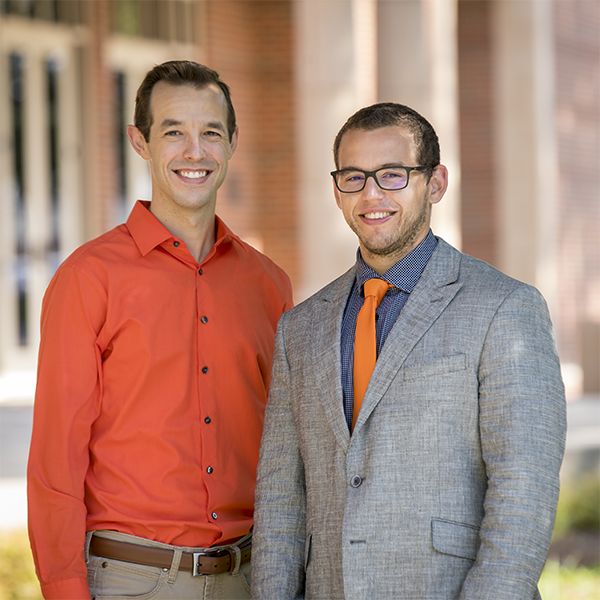
Stronger together
Wednesday, October 23, 2019
A unique collaboration between two early career faculty at Oklahoma State University is paying dividends.
Not long after Sam Emerson began his faculty position in nutritional sciences, he met Nate Jenkins, an assistant professor in health and human performance. The pair discovered they had similar research interests and training across the two disciplines of nutrition and exercise. During that initial meeting, Jenkins mentioned a funding opportunity from the American Heart Association.
Funding from the American Heart Association is often difficult to secure, but they decided to give it a shot together.
“For a lot of grants, you put in the first proposal and hope to hear something positive. You don’t fully expect to receive funding the first time,” Emerson said.
The proposal sought to study specific ways for older women to combat heart disease. The American Heart Association funded it on the pair’s first submission for $153,933 over two years.
Cardiovascular disease and heart attacks are often thought to be a more prevalent problem for men. According to the Centers for Disease Control, heart disease is the leading cause of death for women in the United States, and more women than men are living with cardiovascular disease.
Jenkins and Emerson’s study focuses on postmenopausal women. Hormone replacement therapy appears to increase the risk of cardiovascular disease, and both the American Heart Association and the American Medical Association advise against estrogen replacement. Interventions and alternatives to control or decrease cardiovascular disease in postmenopausal women are needed.
“From an exercise standpoint, we would typically prescribe aerobic exercise, such as going for a walk, for heart health,” Jenkins said. “But there is also emerging evidence that suggests resistance training may have either similar or additional benefits for cardiovascular health.”
That’s the premise of this study — to determine if resistance training can lessen cardiovascular risk in postmenopausal women.
Emerson and Jenkins are running a series of groups in 16-week training periods. The women go through a series of tests over a three-day period. Lab assistants look at body composition on a DEXA scan, metabolic outcomes, aerobic capacity, muscle function and more.
“Through the process of recruiting subjects, we’ve heard that women are really excited about the resistance training component,” Emerson said. “Resistance training makes muscles stronger but can also improve your aerobic fitness and ultimately lower your risk. Even if we find that resistance versus aerobic training are not that different in terms of interventions or outcomes, that alone is meaningful, because you may have an (exercise) preference.”
Nutritional sciences department head Stephen Clarke says the support from the American Heart Association is a good reflection of the translational research Emerson and Jenkins are conducting to help improve the quality of life.

“Nate and Sam are providing a stimulating research environment where students can apply what they are learning in the classroom,” Clarke said.
Health and human performance professor Doug Smith is impressed with the duo’s investment in students.
“They are great mentors for undergraduate and graduate students.” Smith said. “Their Ph.D. graduates are seeing great success. They are competitive and receive quality job offers in academia.”
Jenkins and Emerson are both 29 years old and early in their academic careers. Still, they are already receiving considerable recognition. In 2018, Jenkins was named the Terry J. Housh Young Investigator of the Year by the National Strength and Conditioning Association. He is also part of the American Heart Association’s Research Leaders Academy.
Emerson, entering his third year as a faculty member, has mentored two Freshman Research Scholars and two Wentz Scholars at OSU. He also received the College of Human Sciences’ Outstanding Graduate Student Mentor Award in 2019.
Jenkins and Emerson now hold joint appointments across both the College of Education, Health and Aviation and the College of Human Sciences, which is unique at OSU.
The joint appointments facilitate collaboration on research projects and shared lab access. Jenkins and Emerson are also working to develop a joint course for undergraduate students across campus that is meant to be an overview of how nutrition and exercise science impact overall health.
Department head Clarke believes the joint appointment and collaboration are an asset to students.
“It has huge benefits. There is a cross pollination of ideas among students in different programs that wouldn’t normally occur. It’s a benefit for students in different programs to have the opportunity to work together,” Clarke said.
“It makes a ton of sense. Together, we are stronger than we are apart,” Jenkins said.
